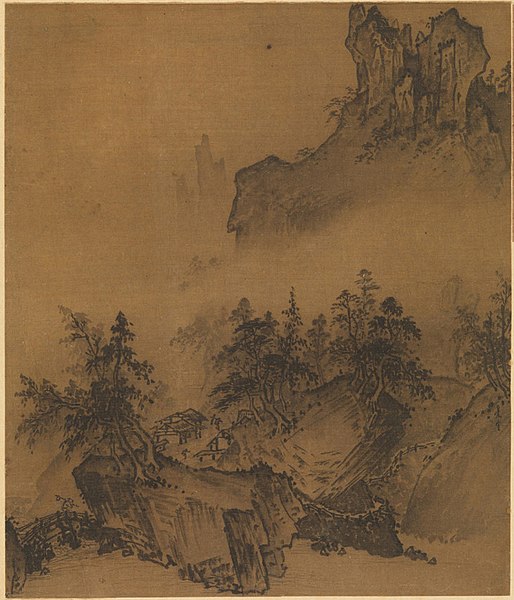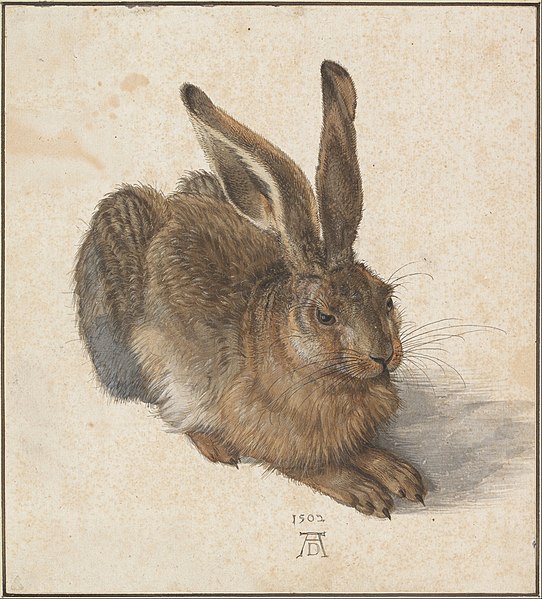A wash is a term for a visual arts technique resulting in a semi-transparent layer of colour. A wash of diluted ink or watercolor paint applied in combination with drawing is called pen and wash, wash drawing, or ink and wash. Normally only one or two colours of wash are used; if more colours are used the result is likely to be classified as a full watercolor painting.
Xia Gui (Song dynasty) – Mountain Market- Clear with Rising Mist, one of the 8 scenes of the Eight Views of Xiaoxiang, a favourite subject in the Chinese ink wash painting tradition, showing the variety of effects achievable with black ink.
Rembrandt selectively used a wash technique in his depictions of lions to enhance the contrast between "the heavy manes and supple skin".
Watercolor or watercolour, also aquarelle, is a painting method in which the paints are made of pigments suspended in a water-based solution. Watercolor refers to both the medium and the resulting artwork. Aquarelles painted with water-soluble colored ink instead of modern water colors are called aquarellum atramento by experts. However, this term has now tended to pass out of use.
An artist working on a watercolor using a round brush
Love's Messenger, an 1885 watercolor and tempera by Marie Spartali Stillman
Albrecht Dürer, Young Hare, 1502, watercolor and body color, Albertina, Vienna
Thomas Girtin, Jedburgh Abbey from the River, 1798–99, watercolor on paper






